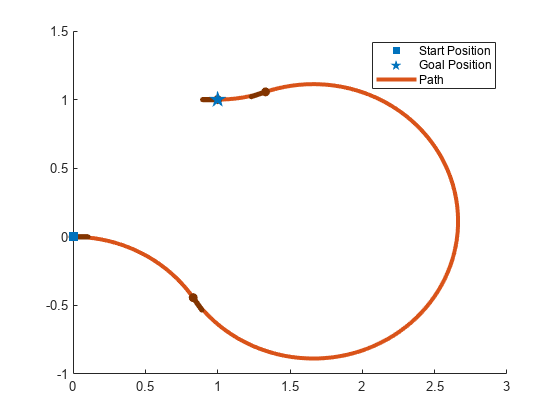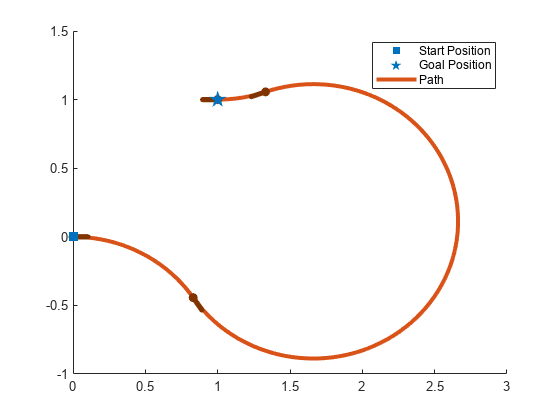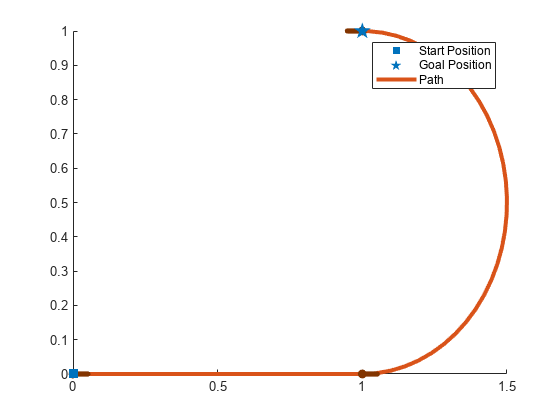dubinsConnection
Dubins path connection type
Description
The dubinsConnection object holds information for computing a
dubinsPathSegment path segment to connect between poses. A Dubins path
segment connects two poses as a sequence of three motions. The motion options
are:
Straight
Left turn at maximum steer
Right turn at maximum steer
A Dubins path segment only allows motion in the forward direction.
Use this connection object to define parameters for a robot motion model, including the
minimum turning radius and options for path types. To generate a path segment between poses
using this connection type, call the connect
function.
Creation
Description
dubConnObj = dubinsConnection
dubConnObj = dubinsConnection(Name,Value)
Properties
Object Functions
connect | Connect poses for given connection type |
Examples
References
[1] Shkel, Andrei M., and Vladimir Lumelsky. "Classification of the Dubins set." Robotics and Autonomous Systems. Vol. 34, No. 4, 2001, pp. 179–202.
Extended Capabilities
Version History
Introduced in R2019b


